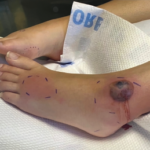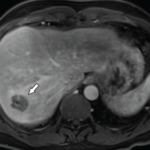Patients with autoimmune diseases, such as spondyloarthritis, are at risk of developing inflammatory bowel disease. Here are considerations for its management and treatment.


Patients with autoimmune diseases, such as spondyloarthritis, are at risk of developing inflammatory bowel disease. Here are considerations for its management and treatment.
Reuters Staff |
(Reuters)—The U.S. Food and Drug Administration said on Wednesday that it had approved Pfizer Inc’s drug, Xeljanz, to treat adults with moderate-to-severe active ulcerative colitis. The effectiveness of Xeljanz (tofacitinib) in treating ulcerative colitis was shown in three controlled clinical trials, including two trials that showed the drug caused disease remission in about 17-18 percent…
Megan Brooks |
NEW YORK (Reuters Health)—Statin use is associated with a lower risk of developing inflammatory bowel disease (IBD), especially Crohn’s disease in older patients, new research suggests. “Prior studies have suggested that statins can decrease inflammation and may improve IBD in patients who already have the disease. To our knowledge, this is the first study to show…
Anne Harding |
NEW YORK (Reuters Health)—Patients with inflammatory bowel disease (IBD) show imbalance in their fungal intestinal microbiota, according to new findings. “The fungal microbiota is a new actor to take into account in the pathogenesis of IBD and potentially in other diseases,” Dr. Harry Sokol of Hospital Saint-Antoine in Paris, an author of the new study,…
Will Boggs, MD |
NEW YORK (Reuters Health)—Patients with inflammatory bowel disease (IBD) commonly develop skin lesions related to anti-tumor necrosis factor (anti-TNF) medications, according to a retrospective study. “We were most surprised by the relatively high percentage (30%) of patients developing skin problems while being treated with anti-TNF agents,” Dr. Isabelle Cleynen from KU Leuven, Belgium, tells Reuters…
Lisa Rapaport |
(Reuters Health)—Doctors know smoking can increase the risk for certain common inflammatory bowel diseases (IBD), but many patients haven’t gotten the message, a new study suggests. Out of 239 patients with two common types of IBD (Crohn’s disease and ulcerative colitis) only half were aware of the smoking risks associated with these conditions. “The take-home…

Baljeet Rai, MD, Abhimanyu Amarnani, MD, PhD, Ja-Yoon Uni Choe, MD, Nicole K. Zagelbaum Ward, DO, MPH, & Richard S. Panush, MD, MACP, MACR |
The study of rheumatology (and medicine) in art, history, literature and music is engaging and informative.1-12 In this article, we present some instances when rheumatic and autoimmune diseases in certain individuals may have affected the course of history in Western civilization. Physicians are usually concerned, appropriately, with the effects of illness on the lives of…

Ryan Guerrettaz, MD, Angelo Ciliberti, MD, Rochella Ostrowski, MD, Elise Wolff, DO, Nadia Qureshi, MD, & Ramzan Shahid, MD |
Acute febrile neutrophilic dermatosis, or Sweet syndrome, is an inflammatory disease that classically presents with fever, leukocytosis and tender, erythematous plaques characterized by neutrophilic infiltrates on biopsy. Sweet syndrome has been reported in association with several autoimmune diseases, including inflammatory bowel disease, systemic lupus erythematous, rheumatoid arthritis and sarcoidosis.1 Here, we discuss a case of…

Katherine Chakrabarti, MD, & Andrew Vreede, MD |
Abscesses are typically caused by infections, but some are, instead, sterile. Aseptic abscesses (AAs) are characterized by the same neutrophil-rich histopathology as infectious abscesses; however, they don’t improve with antibiotics. Rather, AAs require treatment with anti-inflammatory medications. Although relatively rare, this phenomenon is important for rheumatologists to recognize given its frequent association with underlying systemic…

Philip Helliwell, DM, PhD, FRCP |
When Moll and Wright first described the spondyloarthritides in the early 1970s, the archetype of the group was ankylosing spondylitis (AS).1 The shared clinical features of the spondyloarthritides were sacroiliitis; asymmetric large joint peripheral arthritis; psoriasis or psoriaform skin lesions, including keratoderma blennorrhagica; uveitis; and bowel inflammation. Moll and Wright described five clinical subgroups of…